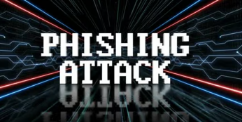Detecting and preventing phishing attacks is crucial for maintaining cybersecurity. Here are some strategies in both areas:
Detection Methods:
- Email Filtering: Use advanced email filters that can detect phishing attempts based on suspicious content, sender behavior, and known malicious indicators.
- User Education: Regularly train employees to recognize phishing emails. Common indicators include:
- Generic greetings (e.g., “Dear Customer”)
- Unusual requests for sensitive information
- Suspicious links (hover over links to see the true destination)
- Poor spelling and grammar
- Domain Monitoring: Monitor domains for look-alike domains that mimic your organization’s domain to catch potential phishing sites.
- Secure Email Gateways: Implement secure email gateways that assess incoming emails for malicious content and links before they reach users.
- Multi-factor Authentication (MFA): Use MFA to add an extra layer of security. Even if credentials are compromised, MFA can prevent unauthorized access.
Prevention Strategies:
- Security Awareness Training: Conduct regular training sessions to educate employees about the latest phishing techniques and encourage them to report suspicious emails.
- Regular Software Updates: Ensure all systems, tools, and security applications are up-to-date to protect against vulnerabilities.
- Implement Anti-Phishing Tools: Utilize specialized anti-phishing software that scans emails and detects potential threats.
- Phishing Simulation Tests: Conduct simulated phishing attacks to assess employee awareness and improve training programs accordingly.
- Incident Response Plan: Have a clear incident response plan that outlines steps to take if a phishing incident is suspected or occurs.
- Domain-Based Message Authentication, Reporting & Conformance (DMARC): Implement DMARC along with Sender Policy Framework (SPF) and DomainKeys Identified Mail (DKIM) to prevent spoofing and authenticate legitimate email senders.
By combining these detection and prevention techniques, organizations can significantly reduce the risk of falling victim to phishing attacks. Regularly reviewing and updating security practices is also essential to stay ahead of evolving threats.
